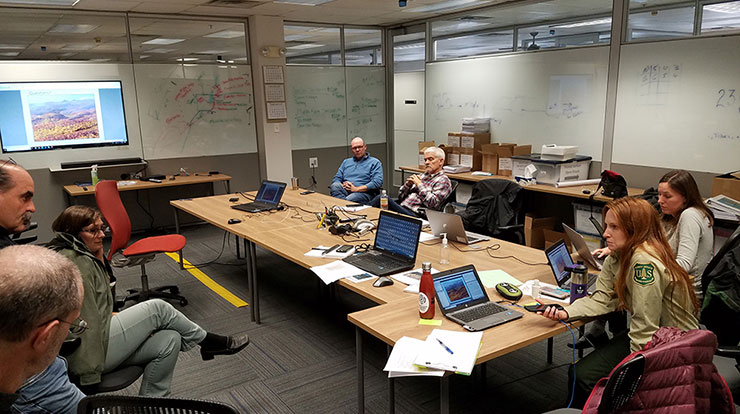Public Participation in National Forest Planning in the Pandemic and Digital Age

Though we are no longer sheltering-in-place, public participation in natural resources planning has forever shifted. What does this mean for ensuring that people have access to participation processes?
Prior to the COVID-19 pandemic, the USDA Forest Service had worked toward strengthening public participation in land management planning. When the pandemic was declared, National Forests across the country increased the number and quality of virtual tools used to ensure broad and meaningful stakeholder engagement. A Northern Research Station scientist collaborated with the National Forest System to capture experiences and lessons learned from virtual engagement, focusing primarily on North Carolina National Forests. A paper describes the conditions necessary for meaningful engagement as laid out in the Trinity of Voice theory and how North Carolina National Forests worked toward supporting them, including: access, which requires people not only have the opportunity to participate in the process but also have the skills needed to assess and use information; standing, which is enabled when processes are designed to support participants’ ability to express their opinions and knowledge; and influence, which occurs when access and standing are both present and participants have the ability to affect outcomes to the extent described when processes are convened. The pandemic catalyzed National Forest staff to develop competences in virtual engagement. The methods and lessons learned are being shared and will be applied well into the future to ensure meaningful participation.

Contacts
- Kristin Floress, Research Social Scientist
Publications and Resources
Forest Service Partners
- Alice Cohen, Collaboration Specialist, National Forests in North Carolina
- Bradley Kinder, National Forest System Infrastructure Coordinator, Washington Office
- Kenli Kim, National Program Leader for Social Science, Washington Office

